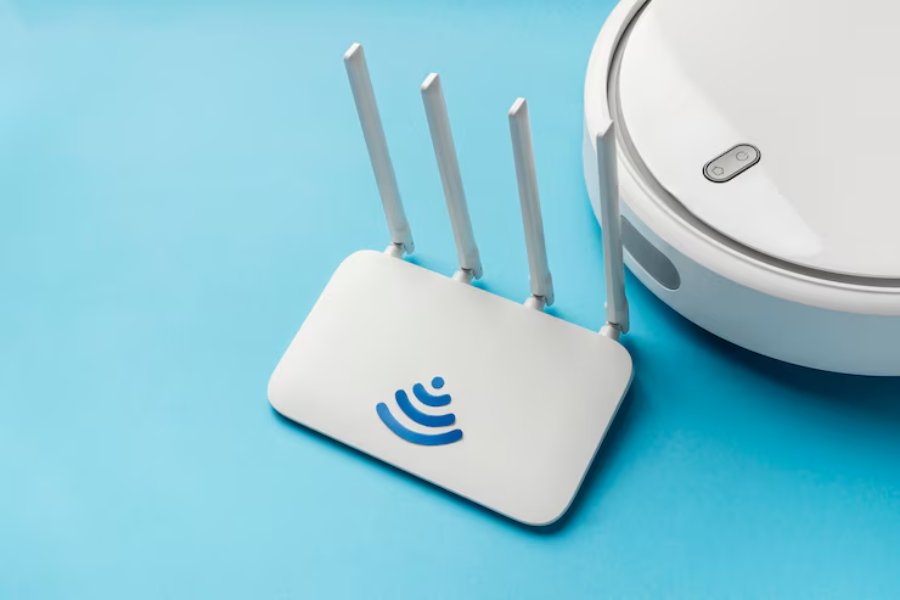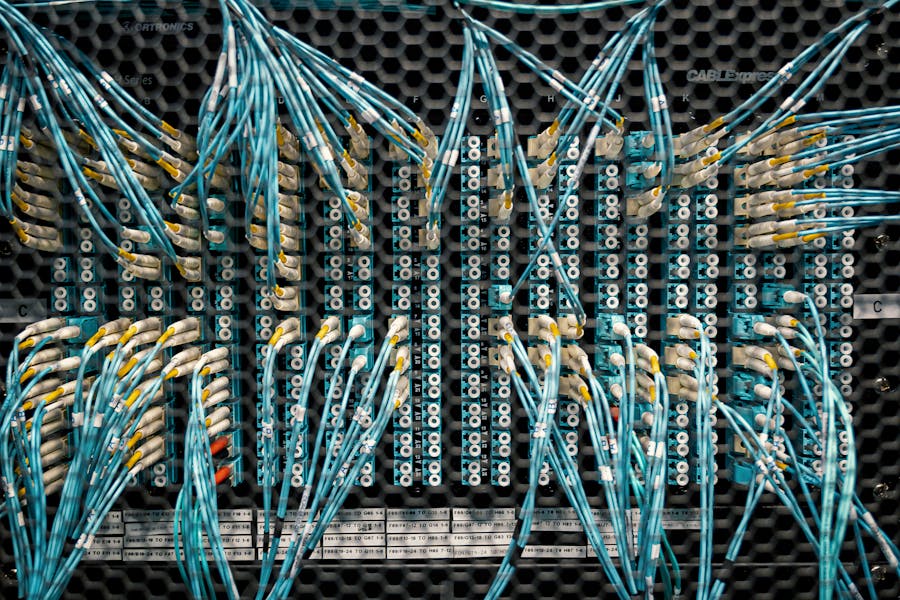
Many people often ask, “Can a device have multiple IP addresses?” especially when navigating the complexities of modern networking. In today’s highly connected world, devices like computers, smartphones, servers, and IoT systems frequently operate using multiple IP addresses simultaneously. But why does this happen, and what makes it necessary?
The simple answer is yes—a device can have multiple IP addresses for various reasons such as redundancy, enhanced security, load balancing, and multi-homing. Devices are often assigned IPv4 and IPv6 addresses or multiple IPs through different network interfaces to ensure smooth operation across diverse networks.
To fully understand whether a device can have multiple IP addresses, it’s essential to understand how network architecture, IP allocation, and routing function together. This is common but critical for businesses, data centers, cloud services, and even personal devices that rely on stable and efficient connectivity.
In this comprehensive guide, we’ll explain everything you need to know about whether a device can have multiple IP addresses. You’ll discover the technical logic behind multiple IPs, the assignment process, the role of routing, and the benefits and security challenges involved. By the end, you’ll have a complete understanding of how multiple IP addresses enhance the performance and security of modern devices.
Can a Device Have Multiple IP Addresses?
Yes, a device can have multiple IP addresses. This allows it to operate on different networks, improve performance, enhance security, enable redundancy, and support multiple protocols like IPv4 and IPv6 simultaneously.
Why Devices Use Multiple IP Addresses
In modern networking, the question of whether a device can have multiple IP addresses arises frequently as systems become more advanced and interconnected. Devices now frequently operate with multiple IP addresses to meet the demands of speed, stability, and security. For businesses, assigning different IP addresses isolates internal systems from external access, providing stronger security layers and better traffic management.
Redundancy also plays a crucial role. Devices with multiple network interfaces can automatically switch to backup connections if the primary one fails, maintaining uninterrupted connectivity for critical services. In large-scale cloud environments and data centers, multiple IP addresses are essential for load balancing and efficiently distributing incoming traffic to avoid server overload.
Moreover, most modern devices support IPv4 and IPv6 protocols, often requiring separate addresses to maintain full network compatibility. Virtual machines, containers, and IoT devices also use multiple IP addresses to securely manage connections across separate virtual networks. Even personal devices like laptops and smartphones often run multiple IP addresses simultaneously when connected to Wi-Fi, mobile data, or VPNs. Altogether, multiple IP addresses provide flexibility, stability, and improved network performance across all industries.
How Can a Device Have Multiple IP Addresses?
Understanding can a device have multiple IP addresses requires exploring the different technical methods that allow devices to operate with multiple IPs simultaneously.
Dual-Stack Networks (IPv4 and IPv6)
One of the most common reasons is dual-stack network configurations. In this setup, devices are assigned both an IPv4 and an IPv6 address to ensure seamless communication across all modern internet standards. As IPv6 adoption grows, dual-stack networks allow devices to operate efficiently across both protocols without compatibility issues.
Multiple Network Interfaces
Many servers, advanced routers, and some desktop computers are equipped with multiple network interface cards (NICs). Each NIC connects to a separate network or subnet, automatically receiving a unique IP address. This allows the device to operate on multiple networks simultaneously, improving connectivity options and redundancy.
Virtual Machines and Containers
In virtualization environments, virtual machines (VMs) and containers often require multiple IP addresses. These isolated environments need separate IPs to ensure proper routing and secure network segmentation, especially when hosting multiple services on a single physical machine.
NAT and VPN Assignments
Devices using Network Address Translation (NAT) or Virtual Private Networks (VPNs) may simultaneously operate with private internal IP addresses and separate public-facing IPs. This enables secure communication while maintaining access to external resources.
Load Balancing and High Availability
Web servers, cloud instances, and large-scale applications frequently use multiple IP addresses to distribute incoming traffic. Load balancing ensures that no single server becomes overwhelmed, providing better performance and continuous availability for users.
Advantages of Multiple IP Addresses
Assigning multiple IP addresses to a device offers numerous benefits that enhance both performance and security in today’s complex network environments:
- Network Redundancy: Multiple IP addresses allow devices to switch between network connections seamlessly if one fails, ensuring uninterrupted connectivity and improved system reliability.
- Security Enhancements: Separating services across multiple IPs helps isolate sensitive data, reducing the attack surface and limiting potential vulnerabilities from unauthorized access.
- Load Balancing: Using multiple IP addresses enables servers and devices to distribute incoming traffic more evenly. This prevents congestion and ensures smoother performance during peak usage times.
- Protocol Compatibility: Devices operating with both IPv4 and IPv6 addresses maintain full compatibility with modern internet standards, ensuring seamless communication across different networks and platforms.
- Service Separation: Different IP addresses allow administrators to assign specific services or applications to separate IPs, making management, monitoring, and troubleshooting far more efficient.
- Improved Performance: By leveraging multiple IP addresses, devices can handle a higher volume of simultaneous connections without degradation in speed or reliability.
These advantages demonstrate why the question can a device have multiple IP addresses is not only relevant but increasingly important in modern network design.
Why Can a Device Have Multiple IP Addresses on One Network?
Devices can also have multiple IP addresses within the same network segment using advanced configurations like IP aliasing. This setup is standard in servers, routers, or multi-service devices that need to host multiple applications or services simultaneously.
For example, a web server might host multiple websites using virtual hosts, each assigned its IP address. Network appliances, such as firewalls or proxies, often utilize multiple IPs on the same physical interface to manage internal and external traffic separately. This approach provides better resource allocation, fine-tuned security policies, and greater control over traffic routing.
However, administrators must carefully plan IP assignments to avoid conflicts, unnecessary complexity, and inefficient routing. Proper subnetting and routing tables are crucial to maintain stable network operations when assigning multiple IPs to a single device on the same subnet.
Security Concerns with Devices Having Multiple IP Addresses
While having multiple IP addresses offers many advantages, it also introduces several security risks that require careful management:
- Increased Attack Surface
Each additional IP address adds another potential entry point for attackers. The more IP addresses a device has, the more opportunities exist for unauthorized access attempts, making overall security monitoring more complex. - Misconfiguration Risks
Assigning multiple IP addresses demands precise configuration. Any mistakes can inadvertently expose sensitive data, leave unnecessary ports open, or allow unauthorized services to be accessed from external networks. - Complicated Firewall Rules
Managing firewall settings becomes more challenging when multiple IP addresses are involved. Network administrators must create detailed rules for each IP to ensure all services are properly secured and isolated. - IP Spoofing Vulnerabilities
Devices with multiple IP addresses are more susceptible to IP spoofing attacks if not properly secured. Attackers may exploit these configurations to impersonate trusted devices or intercept sensitive data. - Logging and Monitoring Challenges
With multiple IP addresses in use, tracking network activity, performing forensic investigations, and analyzing security logs becomes more complicated. Proper monitoring tools and strategies are essential to maintain visibility and quickly detect potential threats.
Conclusion
In summary, it is not only possible but a standard practice for a device to have multiple IP addresses. Devices often utilize multiple IPs to meet the growing demands of performance, scalability, redundancy, and security. Whether managing internal and external traffic, supporting both IPv4 and IPv6 protocols, or operating virtualized environments, multiple IP addresses enhance a device’s ability to handle complex network requirements.
However, while this configuration brings significant advantages, it also presents challenges such as misconfigurations, increased attack surfaces, and more complex monitoring. Careful planning, proper security measures, and ongoing management are essential to ensure that devices function securely and efficiently within these multi-IP network environments.
FAQ’s
Can a device have multiple IP addresses at the same time?
Yes, devices can hold multiple IP addresses simultaneously for redundancy, security, or multi-network access.
Why would a device need more than one IP address?
Reasons include network redundancy, load balancing, IPv4/IPv6 dual-stack support, and separating services.
Is it safe for a device to have multiple IP addresses?
Generally, yes, but misconfiguration or lack of security measures can increase vulnerability.
Can smartphones have multiple IP addresses?
Yes, phones often use multiple IP addresses simultaneously when connected to mobile data and Wi-Fi.
Can routers assign multiple IP addresses to devices?
Advanced routers can assign multiple IPs using IP aliasing, sub-interfaces, or VLAN configurations.
Do virtual machines use multiple IP addresses?
Virtual machines frequently have multiple IPs for different virtual networks or hosted services.






